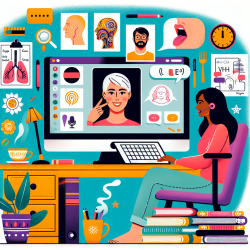As a Special Education Director with a vested interest in the continuous improvement of therapeutic services, I find it crucial to encourage our practitioners to delve into resources that can significantly enhance their skills and service delivery. The "Audiological Handbook of Hearing Disorders" is one such resource that stands out for its comprehensive approach to tackling a wide array of hearing impairments encountered in clinical settings.
The book, authored by Stephen V. Prescod, serves as a testament to the complex nature of audiological disorders and the multifaceted approach required in their management. It is meticulously arranged to cover disorders from the outer ear to the central auditory system, offering a logical progression that mirrors the clinical assessment and management process. Each chapter not only delves into the etiology and pathology of various disorders but also discusses otological and audiological management strategies, supplemented by quick reference tables summarizing key information.
However, it's important to note that while the book provides a solid foundation, it does have its limitations, such as the lack of coverage on newer clinical techniques like brainstem audiometry. This gap highlights the necessity for practitioners to seek additional resources and stay abreast of the latest developments in the field.
The final chapter on "Special Tests: Problems and Safeguards" is particularly insightful, addressing the limitations and combined value of various "special" tests used in audiology. This segment underscores the importance of critical evaluation and judicious application of diagnostic tests, a skill that is indispensable in the nuanced field of audiological assessment and management.
Given the book's depth and breadth, it is an invaluable resource for otolaryngologists, audiology students, and clinical audiologists seeking a clear, concise reference for solving everyday clinical problems. It is also beneficial for those in need of a comprehensive one-source for audiological information. While the book is primarily geared towards these audiences, its insights are also of great value to special education professionals who collaborate closely with audiologists to support students with hearing impairments.
In conclusion, the "Audiological Handbook of Hearing Disorders" provides a wealth of knowledge that can enhance the clinical practice of audiologists and other hearing health professionals. It serves as a reminder of the complexity of hearing disorders and the importance of a thorough, informed approach to management. For those interested in further exploring the rich content and insights offered by this handbook, I encourage you to delve into the original research paper for a more in-depth understanding.
To read the original research paper, please follow this link: Audiological Handbook of Hearing Disorders.










